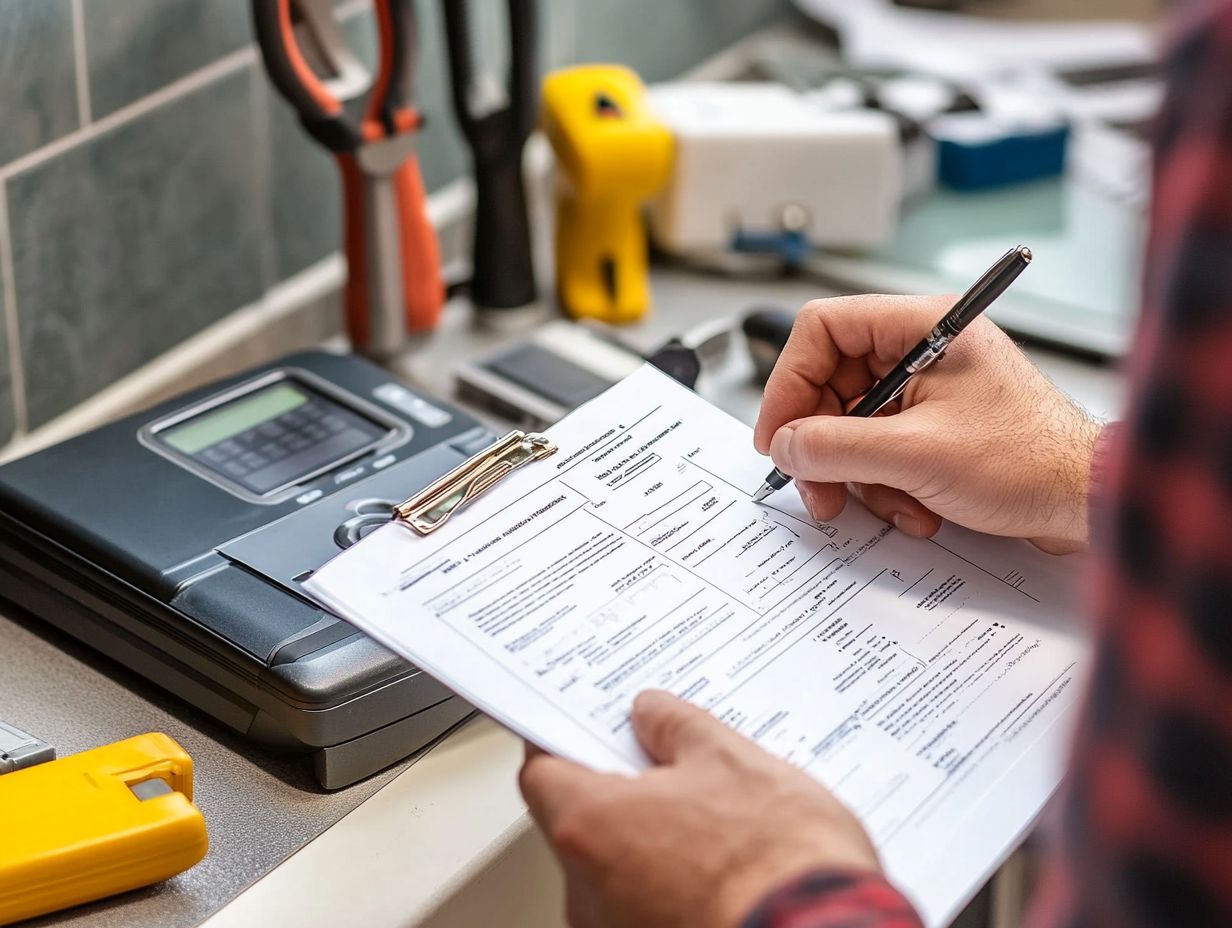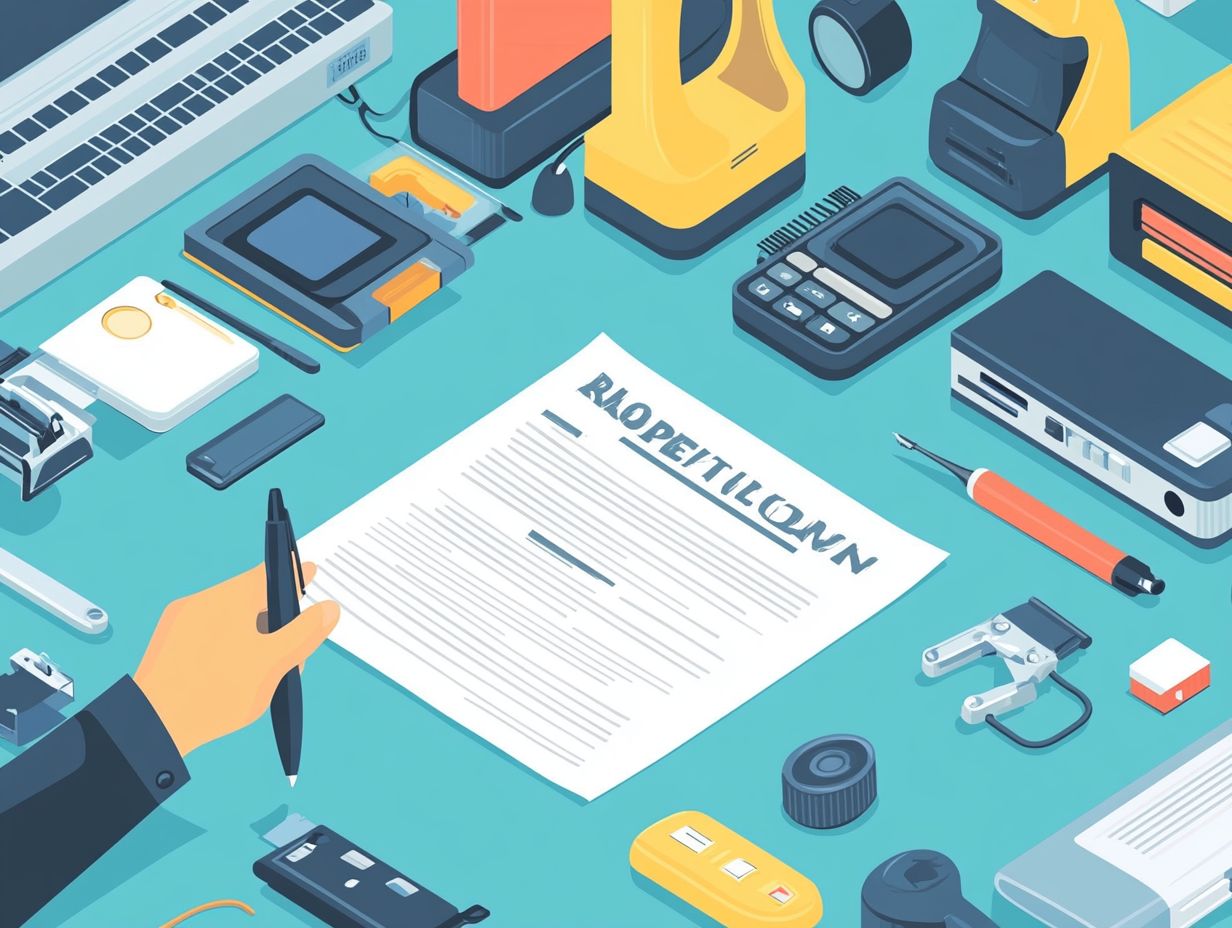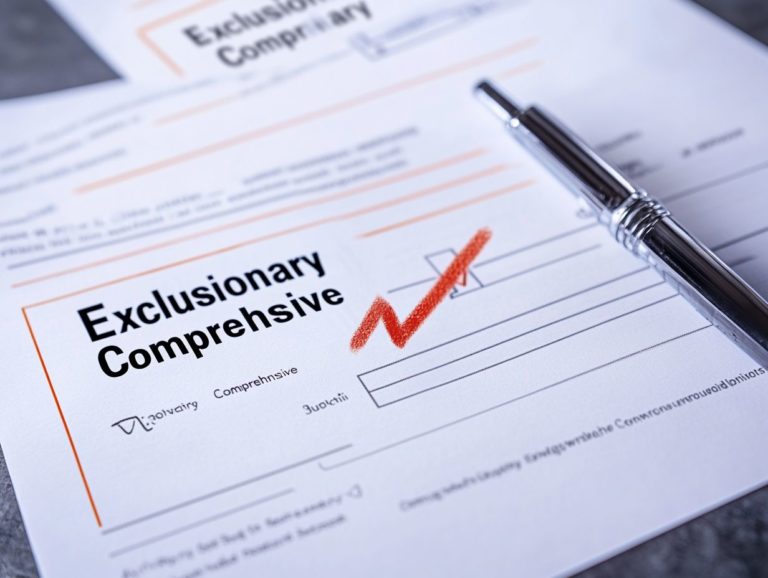The Best Practices for Maintaining Warranty Coverage
Warranties are essential for protecting what you buy, giving you peace of mind against unforeseen repairs and replacements.
Navigating the intricacies of warranty coverage can be complex. This article unpacks the essentials, explaining what a warranty is, the various types available such as manufacturer and extended warranties and the factors that could jeopardize your coverage.
This article offers best practices for maintaining your warranty and advises you on the steps to take if your claim is denied. Explore this information to ensure you’re maximizing your warranty benefits.
Contents
- Key Takeaways:
- Understanding Warranty Coverage
- Types of Warranties
- Factors that Can Void Warranty Coverage
- Best Practices for Maintaining Warranty Coverage
- What to Do if Warranty Coverage is Denied
- Frequently Asked Questions
- What are the best practices for maintaining warranty coverage?
- Is it important to keep all documentation and receipts for warranty coverage?
- Should I follow the manufacturer’s recommended maintenance schedule for my product?
- Can I perform my own repairs on a product under warranty?
- Can I modify my product and still keep warranty coverage?
- What should I do if I have an issue with my product under warranty?
Key Takeaways:

- Regular maintenance and inspections are crucial for maintaining warranty coverage. Follow the manufacturer’s recommended maintenance schedules and keep records of all maintenance performed.
- Proper usage and care of the product can impact warranty coverage. Use the product as intended and avoid actions that may void the warranty.
- If your warranty claim is denied, take immediate action and explore legal options. Keeping records and documentation of all interactions with the manufacturer can be helpful.
Understanding Warranty Coverage
Understanding warranty coverage is crucial for both businesses and consumers. It involves nuanced aspects of warranty management that can greatly influence asset management and customer satisfaction.
By effectively managing warranty details such as terms and conditions you ensure that warranty claims are processed smoothly. Customers will remain well-informed about their coverage.
Staying on top of warranty expiration and renewal protocols facilitates proactive renewal management. This builds customer trust in warranty practices, ultimately enhancing the overall quality of service you provide.
What is a Warranty?
A warranty serves as your assurance from a manufacturer or seller, guaranteeing that their product will perform as promised for a specified period. It covers repair or replacement costs and typically requires warranty registration for validation.
This promise gives you peace of mind, detailing what s covered and for how long, including the duration of coverage and the types of failures that are protected. You ll encounter different types of warranties:
- Full warranties, which cover nearly all issues,
- Limited warranties, which may only address certain components or defects.
Registering your warranty is essential; it activates the agreement and makes it easier for you to validate your claims if any issues arise. Efficient tracking of warranty services can save you both time and money, fostering a sense of accountability between you and the manufacturer.
Types of Warranties
You ll find a range of warranty types available, including manufacturer warranties and extended warranties. Each option provides varying levels of coverage and service contracts tailored to meet your specific needs and expectations, all while effectively managing warranty costs.
Manufacturer Warranties
Manufacturer warranties are guarantees issued by the product’s maker, detailing the coverage for defects and performance issues. Typically, these warranties are valid for a specific period and require validation through proper documentation.
These warranties provide you with reassurance, demonstrating that the manufacturer is committed to the quality and reliability of their products. Depending on the specific terms and conditions, your coverage may include repair, replacement, or even monetary reimbursement for any issues that arise within the warranty period.
To validate your warranty, it s essential to keep your receipts and use the product correctly, along with adhering to any prescribed maintenance schedules. Common warranty claims often relate to defects in materials or workmanship.
Understanding the claims process like contacting customer service or submitting necessary forms can streamline resolution and ensure a smoother experience for you as the consumer.
Ready to make the most of your warranty? Check your documents today!
Extended Warranties

Extended warranties, often called service contracts, offer additional warranty management options that go beyond the standard manufacturer warranty. They provide coverage for a longer duration and often for more extensive issues.
These service contracts can ease your worries about potential repair costs. You can enjoy your purchases without the fear of financial strain when unexpected problems arise. This added security can greatly enhance your satisfaction, as you feel protected against life’s little surprises.
However, it s crucial to understand that while extended warranties can be advantageous, they also come with certain drawbacks. The added costs might outweigh the benefits, especially for products you don t use frequently. You ll need to navigate these options thoughtfully, weighing your personal needs against potential increased warranty expenses. Ensure that the coverage aligns well with your purchasing and usage habits.
Factors that Can Void Warranty Coverage
Several factors can void your warranty coverage. These include failing to adhere to warranty terms and misusing the product. Additionally, not maintaining proper documentation can significantly undermine your trust and satisfaction with the warranty process.
Warranties can be voided for several reasons: improper use, neglecting maintenance, and failing to provide required documents during claims processing.
Common Reasons for Voided Warranties
If you decide to make unauthorized repairs to your appliance, you not only undermine the manufacturer’s trust but may also encounter significant functionality issues. Neglecting essential maintenance tasks, like regular cleaning or servicing, can cause your product to deteriorate more quickly than anticipated, ultimately breaching warranty conditions.
Failing to register the warranty within the designated timeframe could leave you unprotected. Most manufacturers require this step to validate the warranty terms. Adhering to warranty guidelines is crucial for ensuring coverage and maximizing the lifespan of your product.
Best Practices for Maintaining Warranty Coverage
Following best practices for maintaining warranty coverage is essential for both consumers and business owners. Commit to regular maintenance and inspections, ensure proper usage, and keep clear records of warranty documentation.
By following these steps, you’ll not only keep your warranty intact but also enjoy your purchase worry-free.
Regular Maintenance and Inspections
Regular maintenance and inspections are vital for preserving your warranty coverage. By ensuring that your products function optimally and adhere to warranty management guidelines, you enhance both trust and satisfaction in your purchases.
Taking proactive steps allows you to identify potential issues before they escalate, ultimately saving you from costly repairs and unwanted inconvenience. When you maintain a clear record of all maintenance and inspections, you not only protect your investments but also smooth the warranty claims process if the need arises.
Document dates, the nature of the work performed, and any parts replaced. This information can prove invaluable if a warranty dispute arises. Keeping these records organized and easily accessible will streamline your interactions with service centers and manufacturers, ensuring that your warranty coverage remains secure throughout the lifespan of your product.
Proper Usage and Care

Proper usage and care of products are crucial for your warranty coverage. Following the warranty terms is essential for valid claims.
When you diligently follow the manufacturer’s guidelines, you significantly enhance your chances of enjoying warranty protection when issues arise. For example, regularly cleaning your appliances as instructed can help prevent malfunctions that might otherwise void your warranty.
Choosing compatible accessories instead of off-brand ones keeps your device running well. Common pitfalls like neglecting routine maintenance or attempting unauthorized repairs can lead to denied claims.
By understanding and implementing the correct usage guidelines, you not only protect your investment but also cultivate a trustworthy relationship with the manufacturer.
Keeping Records and Documentation
Maintaining accurate records and documentation is crucial in warranty management. It ensures that all necessary information is easily accessible during warranty claims, making it easier to handle your warranty claims.
This method simplifies the claims process and serves as a safeguard against potential disputes. By keeping well-organized records of warranties, including detailed receipts, service history, and summaries of communications, you can easily access essential information whenever required.
Such diligence enhances accountability and creates a clear timeline of service events. This practice fosters more efficient interactions with service providers, leading to quicker resolutions.
A robust record-keeping system significantly amplifies the effectiveness of warranty management. It makes it easier for you to navigate and fully leverage the benefits of warranties when you need them most.
What to Do if Warranty Coverage is Denied
If your warranty is denied, act quickly! Knowing your next steps can make all the difference. This may involve meticulously reviewing the claims processing details, addressing any discrepancies, and considering legal options to effectively manage risks within the warranty landscape.
Steps to Take and Legal Options
When you encounter a denied warranty claim, there are several steps you can take to navigate this challenge. Begin by gathering customer feedback, reviewing the details of the claims processing, and considering your options for appeal or potential legal recourse.
-
Start by meticulously documenting every interaction related to the claim. Note dates, times, and specifics of conversations with the claims administrator (the person handling your warranty claim). This organized record will be invaluable in demonstrating the validity of your claim.
-
Carefully review the denial letter for specific reasons. This will allow you to address them directly in your appeal. Engaging constructively with the claims administrator can create opportunities for clarification and may lead to a reconsideration of their decision.
-
If your appeal doesn t yield the desired results, it may be time to explore legal options. Research local consumer protection laws to understand the avenues available to you moving forward.
Frequently Asked Questions
What are the best practices for maintaining warranty coverage?

The best practices for maintaining warranty coverage include keeping all documentation and receipts, following the manufacturer’s recommended maintenance schedule, and understanding the role of maintenance in warranties to avoid unauthorized repairs or modifications.
Is it important to keep all documentation and receipts for warranty coverage?
Yes, keeping all documentation and receipts is crucial for maintaining warranty coverage. These documents serve as proof of ownership, purchase, and maintenance.
Should I follow the manufacturer’s recommended maintenance schedule for my product?
Yes, it’s crucial to follow the maintenance schedule to keep your warranty valid. Not following it can void your warranty.
Can I perform my own repairs on a product under warranty?
It’s not a good idea to do your own repairs while under warranty. A professional can ensure repairs are done correctly and keep your warranty intact.
Can I modify my product and still keep warranty coverage?
No, unauthorized changes to your product will void the warranty. Always stick to the manufacturer’s guidelines.
What should I do if I have an issue with my product under warranty?
Contact the manufacturer or retailer right away if you encounter a problem. They can help you resolve the issue and keep your warranty valid.


